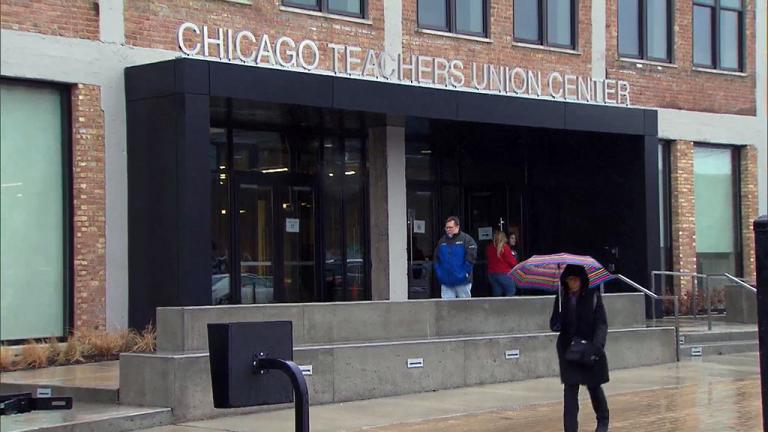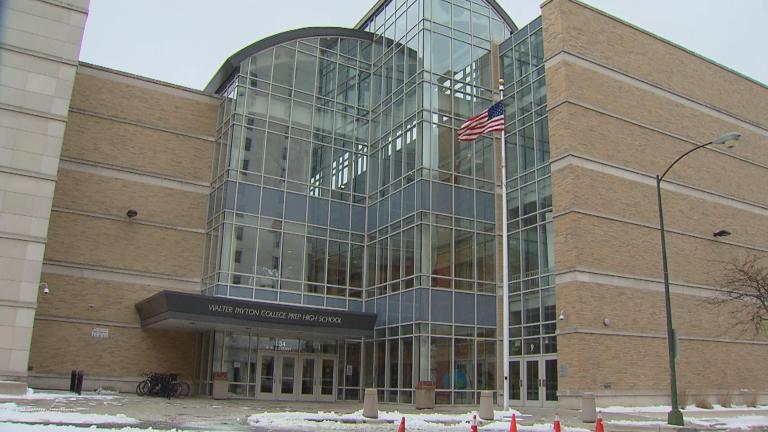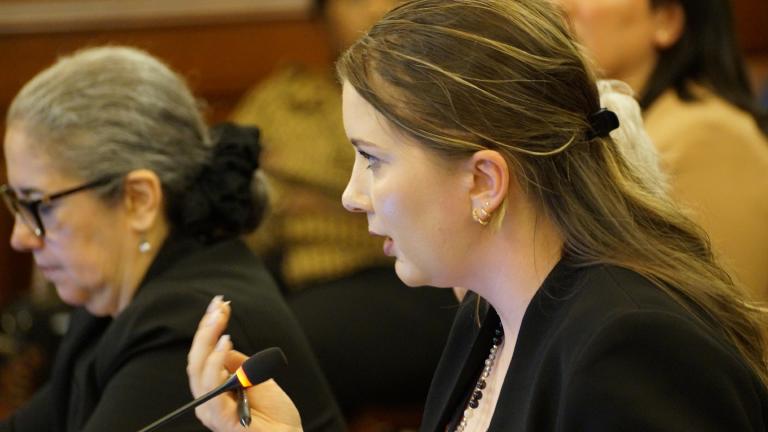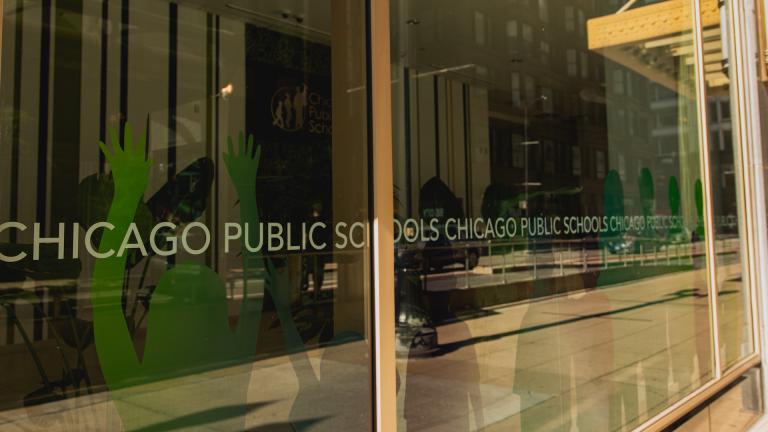Next week, the Chicago Teachers Union will vote to accept or reject the hard-fought contract reached last week with Chicago Public Schools.
If the contract is ratified by the union’s 25,000 members, it also has to be adopted by the Chicago Board of Education.
So what exactly does the contract say about class size, school counselors, nurses and gender-neutral bathrooms? And how do those things actually effect learning?
We asked Malik Henfield, a professor and dean of the School of Education at Loyola University Chicago who is a former school counselor; and Victoria Trinder, an assistant professor of curriculum and instruction at the University of Illinois at Chicago College of Education who serves as the Urban Education Program Coordinator. Trinder spent 10 years as a CPS teacher on the Southwest Side.
Below, an edited Q&A with Henfield and Trinder.
How important is a smaller class for learning?
Malik Henfield: It’s important because great teaching conditions are great learning conditions. Research has found that, yes, individuals can be effective in larger class sizes, of course. But there is also evidence to suggest that students can learn effectively in small classes as well. And we have seen situations where students are coming from environments in which more supports are needed. And some of those supports can be more effectively given to students in a smaller learning environment.
Is there an optimal student-to-teacher ratio?
Victoria Trinder: I don’t know that we could say universally because we know that schools are so different. I was part of a group that founded a small school when I was a teacher in CPS in the ‘90s. And our max was 22 students. I know that different contracts over the years have shown different numbers: 28, 32. It’s really more about understanding the shift in the demands on teachers.
As a former school counselor, how important is it that the new contract calls for more counselors?
Henfield: Tremendous impact. We’re talking about folks, again, who are coming from environments, many of them anyway, who don’t have the resources available to some other students in more affluent areas. Therefore, they don’t have the opportunity to receive supports like mental health counseling and academic and personal social supports which school counselors are trained to do. Now that we’re increasing the numbers of school counselors at the district, it’s getting closer to leveling the playing field where students, over time hopefully, will be able to achieve academically at the same rate as some of their more affluent peers.
The ratios for school counselors and as prescribed by the American School Counseling Association is 250 students for every one school counselor. I have no reason to believe that we’ll get there overnight. But hopefully, hopefully that’s the path forward where we’re in line with what national trends suggest we should be trying to get towards.
The contract also calls for more nurses. How much will this affect schools? Have the teachers been doing that work themselves?
Trinder: Well, I currently work at the university [UIC] and I prepare teachers for the schools. And the lack of nurses is almost always the first surprise for my teacher candidates – that they aren’t there. And that all of the things we might assume to be taken care of by nurses are extra demands on teaching. I would say nurses are essential. I’ve been in Chicago a long time and been involved with CPS for a long time. But it’s still shocking to me that there isn’t a mandatory nurse per elementary school.
There are some social justice issues in this contract, including things like gender-neutral bathrooms. Explain how a gender-neutral bathroom will help contribute to student and teacher success.
Henfield: Anything that a school can do to, again, help level the playing field where students are able to go into their academics without the issues that have been forced on them, the better. So, for example, when you’re talking about a gender-neutral bathroom, you’re talking about students who may be dealing with some situations in which their gender is fluid and they shouldn’t be forced to choose if they don’t have to. And there are things that schools can do to make this experience a lot easier on students. And I’m just glad to hear that we’re moving in that direction.
This contract covers homeless students, sanctuary for immigrant students and other social justice issues. How do these issues impact the learning environment?
Trinder: Student learning is informed by three external forces, all the time: curriculum, policy and interpersonal relationships in a school. When those things are normalized against, set up against students with certain demographics, all of the learning can be interrupted at that point. So some of those things that kids would experience could indirectly, just the threat of that – what we call “stereotype threat” in research – can take up such space in kids’ brains that the learning we would want them to engage in can be impeded through no fault of their own. And that’s discussed less than some of the other crises we see, you know, the inequities.
Henfield and Trinder join “Chicago Tonight” in discussion, along with WTTW News reporter Brandis Friedman, who covers education and other topics.
Related stories:
The Week in Review: 11-Day Teachers Strike Comes to an End
Strike-Ending Deal Will Shape Chicago Schools for Years
Chicago Teachers Strike Comes to an End, Classes Resume Friday
CTU Reaches Tentative Deal But Won’t Return to Work Thursday








